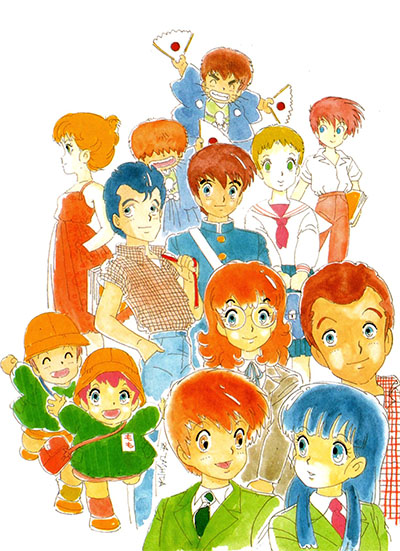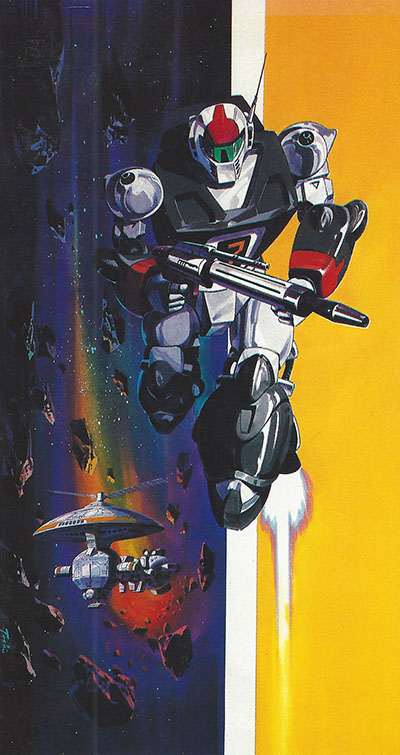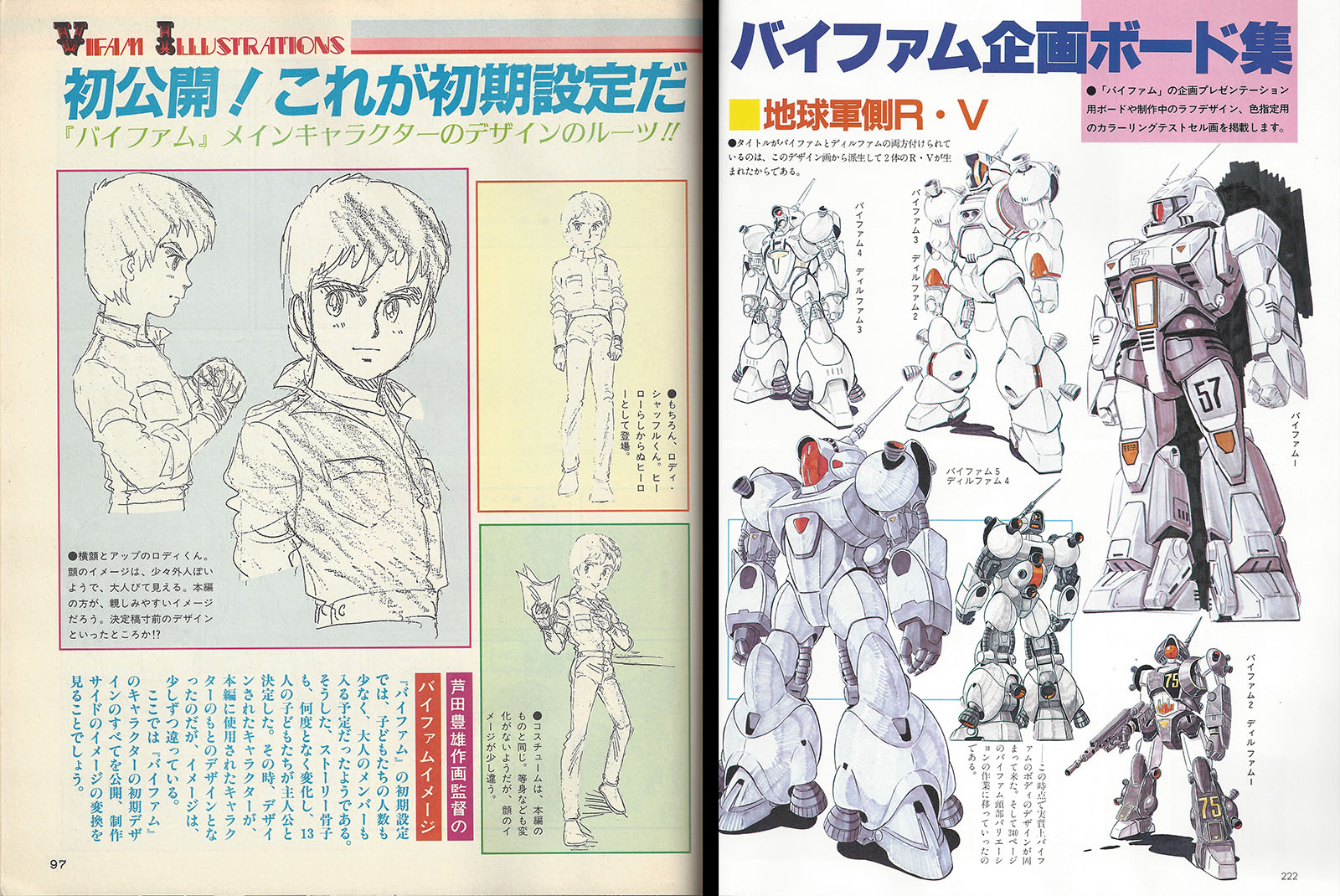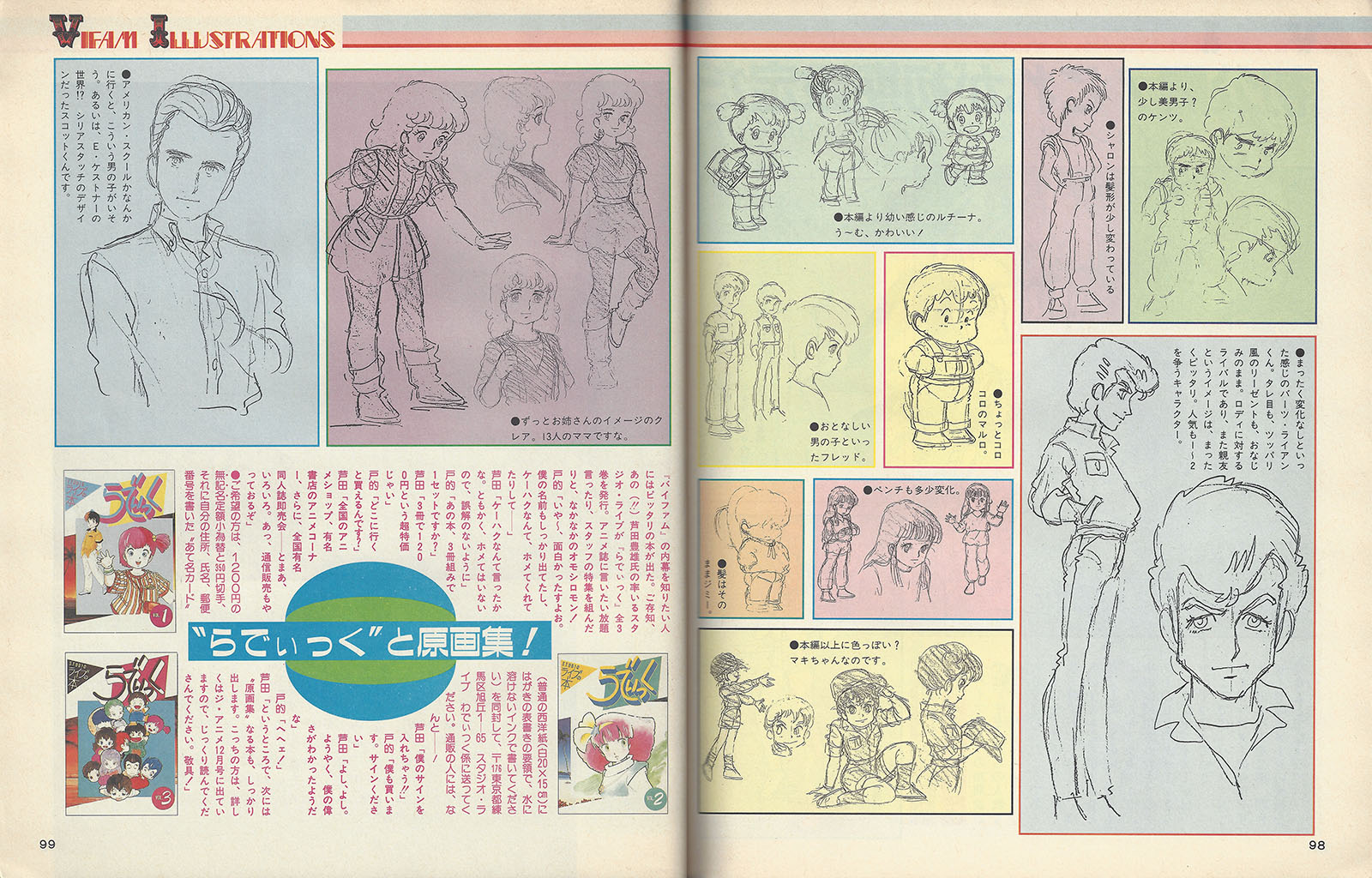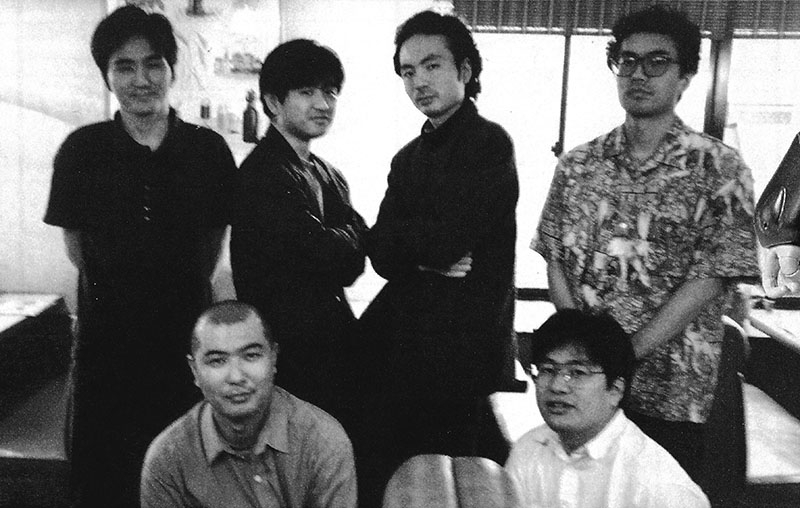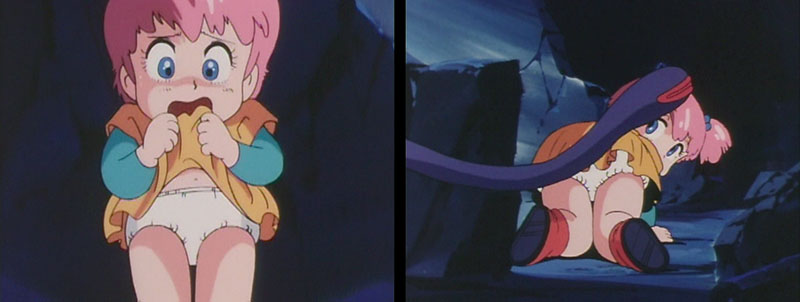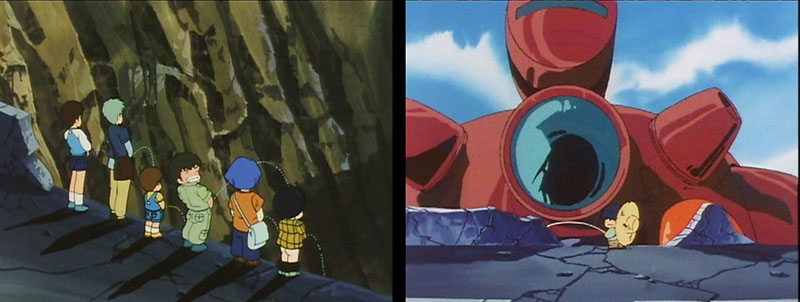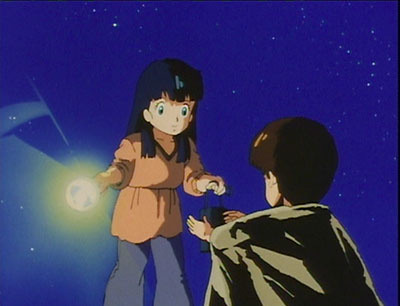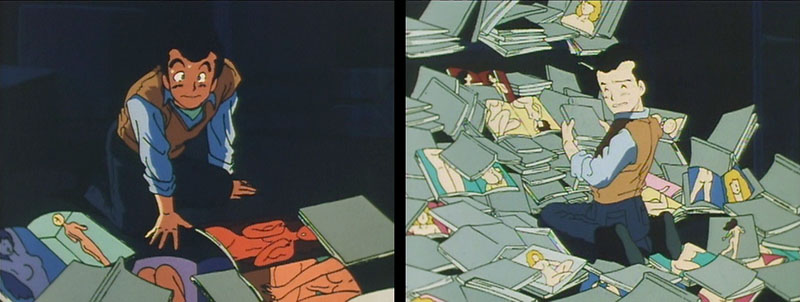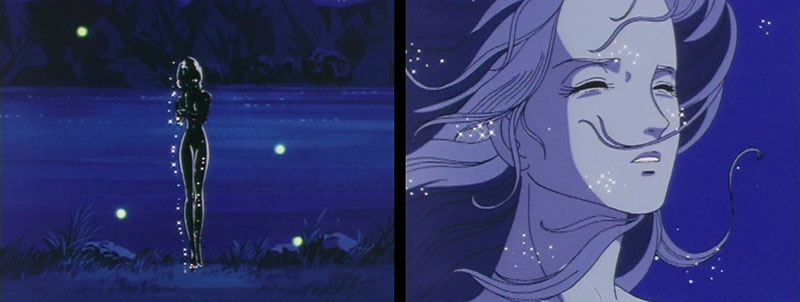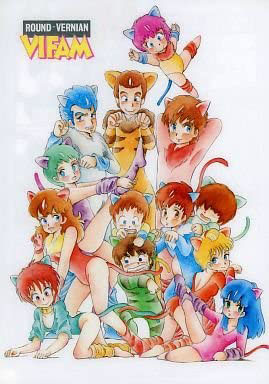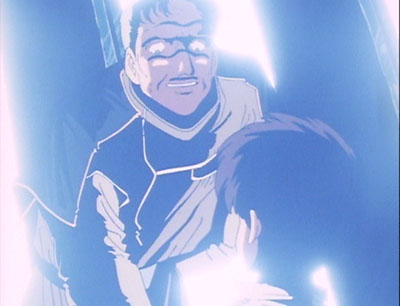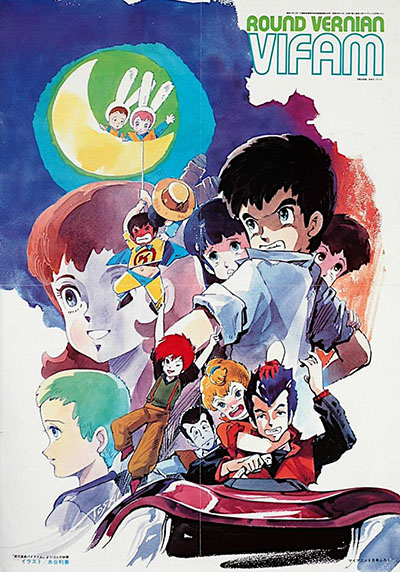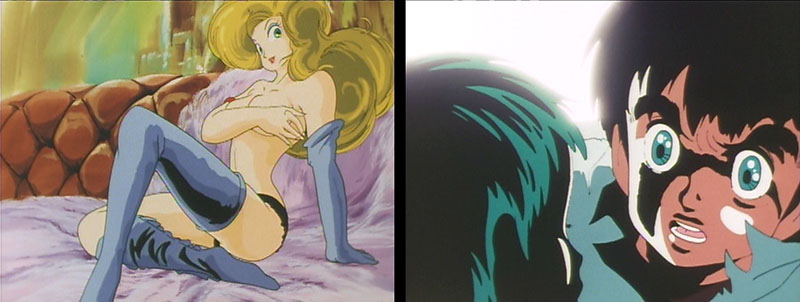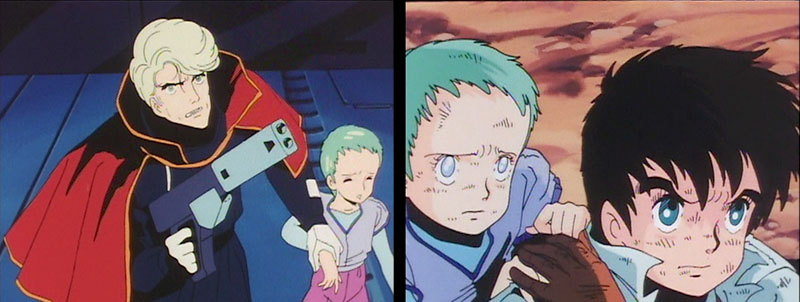Vifam staff interviews
How Vifam got its start
The direction of each staff member who supports Galaxy Drifter Vifam starts with a focus on depicting children to expand the possibilities of anime. How was this basis determined, and how did Vifam initially start? We asked Director Takeyuki Kanda to trace his memories.
“I think I was in the third arc of my previous show, Fang of the Sun Dougram. I was called into the planning office and asked, ‘Why don’t you try something like this?’ I looked at the proposal by Yoshiyuki Tomino, but I thought the theme was too lofty. I didn’t think it was for me. They wanted me to think about it for a few days, but I was so busy with my work that I delayed my reply for a week or two. Then, eventually, I decided that if I was going to do something, I wanted to do it my way. So, what should I do?”
“I decided that I wanted to do a space version of The Drifting Classroom. It was a bit of a lark, really. It’s not something I’d had in the back of my mind for a long time. I just wanted to do something that wasn’t too stiff. Maybe it was a reaction against the darkness of Dougram. Well, that’s how it was.”
In this way, a project was set in motion.
Producer Masuo Ueda, who had been entrusted by Director Kanda with the task of organizing the production, gathered the main staff and went to Chichibu (a resort city northwest of Tokyo) for a “training camp.”
“The simplest reason for the Chichibu training camp was that we could go eat Wild boar hot pot there. Even though we knew of each other, it was the first time we’d all met. I thought it would be better to have a camp to work out details with the planning director. After all, we couldn’t go home at night if we went far away. We had no choice but to stay there and talk about it.”
“When we talked, everyone was thinking the same thing: ‘This is interesting.’ We talked for about two hours, ate dinner, drank some sake, and then decided to go for another hour. After that, we drank some more and through that I found out what everyone was thinking. And that’s how we came up with the first rough idea.”
What did the main staff think about this training camp? Scriptwriter Hiroyuki Hoshiyama said…
“When I went to Chichibu with [Character Designer] Toyoo Ashida and his team, the first thing I thought was, ‘I don’t know what kind of story it will be.’ But everyone was on board with the plan. I wanted the children to do things that were truly French and Japanese, and childlike. We didn’t want to have a big war between countries. I wanted to write about war from a child’s point of view and ask, ‘Who is the enemy?'”
“I had no idea how the story would turn out. Then Director Kanda said, ‘I think it’s a good idea to keep the camera off the enemy side.’ The children would only be attacked, and wouldn’t be able to see their opponent. Instead, we would only make it real on the computer. If we left it to the computer, the battle and the explanation of the situation would be more realistic. So when the character looks at this rough picture, he thinks, ‘That one is our rival.’ That’s what I decided.”
“At that time, the head of the planning department told me, ‘Since there weren’t many girls in Dougram, we need more girls.’ This was a corporate order. I just wanted to make the characters interesting and avoid too many complicated stories.”
Character Designer Toyoo Ashida explained how the Vifam characters were born:
“The year Vifam started, we had a training camp in Chichibu. We got together with the main staff and drew up a rough draft. We put it up on the wall there. We asked ourselves, ‘Can’t we make it a little more fun?’ And so on.”
“Then I tried drawing on the spot. At that time, none of us had any intention of showing thirteen people. We decided to do a science-fiction story with mecha, with children as the main characters. It wasn’t like Jules Verne’s Two Years’ Vacation.”
“The idea at Sunrise was to do a science fiction story with Japanese anime-style characters. But I didn’t think that was good enough. In other words, it would depend on how popular the characters are, whether children will enjoy them or not, and whether they can relate to them or not.”
“I thought the characters should be more Americanized than the kind Hayao Miyazaki was working on. I think it’s more Americanized than it used to be. In short, it would have the image of a high-class hobby. And I wanted it to be popular.”
“What do I mean by ‘popular’? Well, the Japanese people’s tastes are based on the world of manga created by Mr. Tezuka, and now the highly-acclaimed works of Rumiko Takahashi and Akira Toriyama. Both Katsuhiro Otomo and I have the same blood in our veins as Osamu Tezuka. There isn’t a single manga artist who isn’t influenced by Tezuka-sensei. Because of that, I always want to draw characters that the masses will enjoy. That’s how I came up with them.”
“The characters were decided at that training camp. At that time, I was already thinking, ‘That’s why I wanted to do something like this.’ The whole atmosphere was almost unanimous. That’s how I was able to draw the characters in a good frame of mind. They’d say, ‘Oh, this one is so cute, I want to keep it’ and ‘This one’s cute too, let’s keep him’ and we ended up with that number of characters.”
Director Kanda says that the foundation for Vifam was laid at the camp:
“Mr. Ashida and Mr. Hoshiyama knew each other, and we know each other well. We were all seeking something bright and fun and vibrant. He asked me what kind of personality this girl would have, and he drew a really cute character with only one line to be adjusted. It turned out that I could use Ashida’s character designs as is. They were that good.” (See rough designs below)
“In terms of the story, we just added one idea at a time so it wouldn’t be too rigid. We had a meeting where we decided that it would be best if, after watching it, people couldn’t wait to watch it again next week. The truth is, we made it without any real specifics.”
Vifam got started in a haphazard manner, and the basic concept of the Chichibu training camp was to depict children. The beginning of the story, the main characters, and so on were almost decided. Another element that supports the world of this work is mecha.
Mecha Designer Kunio Okawara commented on the design of Vifam…
“At the time I was working on several projects at once, so it was hard to keep up with them. I just brought them all together and illustrated them. That’s how it was. The main robot had already been decided. The reason I went to Chichibu was to help determine the world view. The mecha was done a little earlier than that.”
“At that time, as with other productions, we were raising the age range considerably. It was a problem to aim only at the maniacs [otaku]. I was afraid that we would lose the elementary school fans who we would need from the beginning. That’s why I was very conscious of Gundam. I tried to make the silhouette of the mecha easy to grasp and not too complicated. The policy of the work was a desire to depict children, so I thought it would be best to fashion the mecha to match.”
“Initially, the most important feature of a space robot was the vernier. I wanted to make that the focal point of the front so it would be easy to understand the function. The vernier was very exposed at first (see early designs below), but when I discussed it with the director, he told me that there was no need to show it so much. We decided it would be good to make its function visible from the outside, so we settled on that type. There was supposed to be an energy generator in one part of the Vernier, so we exaggerated that part. Anyway, since it was meant to be computer-controlled, I tried to keep it simple.”
The Chichibu training camp was held in February 1983. Eight months later, Vifam went on the air and began to emerge as a work with many possibilities. Not even the director was able to see the whole picture. However, the outline formed in this training camp foreshadowed an unprecedented work.
In May 1983, the storyboard for the first episode was completed, and animation began. In July, the broadcasting station and time slot were decided. The first episode was completed in mid-September and premiered on October 21st.
Studio Live artist interview, 1995
Translated from the 2nd Laserdisc Collection book
We had a chance to talk with some of the Studio Live artists who supported the popularity of Vifam. We asked them to share their memories of those days.
Toyoo Ashida’s absence from the meeting
Interviewer: Today, I’d like to ask members of Studio Live, who were in charge of drawing at that time, to tell us about their memories of Galaxy Drifter Vifam. Unfortunately, the president of Studio Live, Toyoo Ashida, is not present.
Studio Live Manager: I’m sorry, Mr. Ashida will not be here today. He said, “It would be better if I’m not there, so everyone can talk openly.”
Interviewer: I would like to ask you about things that you usually don’t get to talk about. Could you please start by introducing yourself?
Watanabe: My name is Hiroshi Watanabe. On Vifam, I was an animation supervisor and a key animator. I’m currently busy directing a movie called Slayers.
Yoshimatsu: I’m Takahiro Yoshimatsu. I joined Live while they were working on Vifam, and it was my first time doing animation. I’m also the character designer and animation director for Slayers the Movie.
Kamishina: My name is Hiroshi Kamishina. I used to be a key animator on Vifam. I was just starting out in my second year as a key animator. I’m currently working on Gulliver Boy as a character designer and art director.
Matsushita: My name is Hiromi Matsushita. I was a key animator for Vifam. I’m now retired from Live, and I’m working on various game and anime-related projects.
Chikanaga: My name is Kenichi Chikanaga. At that time, I joined Live after I was shown the Vifam character designs. I was doing videos. Now I’m between work and I’m not doing anything.
Watanabe: You did key animation on Vifam, didn’t you?
Chikanaga: Only a little. It was a trial run.
Watanabe: He was the one who drew Luchina’s underpants in detail (all laugh).
Chikanaga: I’m surprised you remember that. (Laughs)
Interviewer: In Episode 7, there is the scene where the enemy’s recon mecha comes in.
Chikanaga: Yes. (Laughs)
A high-quality first episode
Interviewer: What’s the first thing that comes to mind when you hear about Vifam? I’d like to start with that.
Watanabe: Well, I remember [Director] Kanda’s storyboards. I couldn’t tell the difference between pictures and words. (Laughs) But when it became a film, it was really interesting.
Interviewer: In the interviews at the time, it seemed that everyone said that the work was difficult…
Kamishina: Before that, most of us were working on Minky Momo or Dr. Slump. But now we were drawing a robot, and there were thirteen main characters. So it suddenly became very hard.
Matsushita: Yes, thirteen main characters was a lot of work, wasn’t it? In the middle, four Kukutonian children joined in and it got even harder. (Laughs)
Watanabe: The first episode was particularly difficult. The storyboard was very detailed, and I tried to follow it to the letter. It turned out really well.
Kamishina: We used about 7,000 cels.
Watanabe: We had a lot of demands, so that’s what we ended up doing when we tried to meet them.
Interviewer: How many cels are used for a regular work?
Kamishina: It’s usually about 3,000 (which is said to be a lot). Even for a robot anime, it’s usually around 4,000 cels.
Matsushita: Vifam always used five to six thousand.
Manager: The production manager was always crying.
Interviewer: The art staff also wanted to cry. Can you tell us how you felt when you first saw the thirteen characters?
Watanabe: I remember there was a lot of criticism from fans of Sunrise films. “This is not how robot chara should look. This kind of chara is unacceptable”, you know. So, I think those chara were quite an adventure at first. But once it started airing, most of those voices disappeared.
Kamishina: Fresh was fresh, wasn’t it?
An anime with many depictions of bodily functions
Watanabe: In the first episode, Fred pees himself. I did the key animation for that part, and the episode where they peed off a bridge onto a robot (Episode 36). I wondered why these scenes kept coming to me. (Laughs)
Yoshimatsu: There was a scene like that, wasn’t there? I did the animation. It was fun. (Laughs)
Interviewer: I don’t think you’ll find a peeing-on-a-robot shot in other works. (Laughs)
Watanabe: That’s right. Only Vifam could do that.
Yoshimatsu: There are very few depictions of bodily functions in anime. Even food is surprisingly rare.
Watanabe: And there was a scene where Pench brought drinks to Fred when he was on watch.
Interviewer: That’s in Episode 36.
Watanabe: Yes. Matsushita-kun did the key animation for that scene. At the time, Pench looked just like Tadano-san (Kazuko Tadano, a former employee of Studio Live, who later married Matsushita).
Matsushita: What are you talking about? (Laughs)
Kamishina: You’re right, it did look like her. (Laughs)
Interviewer: What do you think, Matsushita-san?
Matsushita: I don’t remember anything like that. I was more impressed by the Mongolian spots [congenital birthmark] on Kents’ butt.
Interviewer: Episode 21 was a popular episode among the other staff members and voice actors.
Matsushita: I enjoyed doing that one.
Watanabe: When we were working on that episode, we had a lot of erotic books in the studio for reference. (Laughs)
Kamishina: I looked at a lot of them. (Laughs)
Watanabe: The hardest part was the title of the erotic books. The world of Vifam uses English. I was wondering what the title of an erotic book would look like in English. (Laughs)
Interviewer: Did you look at any imported products for reference?
Watanabe: No, I didn’t. (Laughs) Yeah, Kents & Jimmy bonded over their Mongolian spots, right? There’s a scene where the two of them are walking together. I did that scene, but it was sad that it was cut in the editing stage.
Manager: At that time, Sanae Kobayashi (a former Studio Live employee, who later married Chikunaga) was also working as a key animator, wasn’t she?
Kamishina: Kate’s swimming scene was really good, wasn’t it?
Watanabe: That was very sexy, wasn’t it? I only drew Rodey and Barts’ nuts (sad).
Mr. Yamauchi arrives late
Yamauchi: Good morning. I’m Noriyasu Yamauchi, I was a key animator at the time. I just finished a job and I’m taking a break.
Interviewer: Mr. Yamauchi, do you have any memories of Vifam from those days?
Yamauchi: It was my first time doing key animation. It’s still very impressive. Even without that, it was an interesting show. However, there were a lot of characters, so it was a lot of work. There could be as many as ten characters in a single shot.
Matsushita: It was also hard to split up the cels, wasn’t it?
Yamauchi: I think it was a good show to watch because so much was happening on the screen.
Watanabe: I’m glad you saw it. (Laughs)
Kamishina: When I think of memories of that time, I don’t mean just about the work. There were a lot of interesting things happening at Sunrise, weren’t there?
Watanabe: Mr. “T,” who is now the director of a popular film, told me to wait for him at Studio Live. I waited for him but he didn’t show up, so I was thinking, “He’s late,” when suddenly I heard a cracking sound from the entrance. Then Mr. “T” came in. He handed me a bag and said, “I’m sorry I’m late,” and there was blood splatter on it. He came right through the studio’s glass door. (Laughs) I heard that he got several stitches. It brought tears to my eyes. (Laughs)
Kamishina: Seriously?
Matsushita: I wonder who that was. (Laughs)
Interviewer: Mr. Yoshimatsu and Mr. Chikanaga, did you join the company while they were working on Vifam?
Yoshimatsu: Yes, I did.
Interviewer: So Vifam was your first job?
Yoshimatsu: Yes: I got a lot of practice with Vifam and learned a lot.
Watanabe: My drawings were messy, so it must have been difficult for you. (Laughs)
Chikanaga: I was around when the first episode started. At that time, I was not only applying to Live, but to other companies as well. Mr. Ashida told me, “This is what I’m working on now” and he showed me the character chart for Vifam. I thought, “Oh, I like that” and joined up. But I didn’t think it would be for mecha. (Laughs)
Yamauchi: I guess you liked it because it had a lot of girls in it.
Chikanaga: That’s right. (Laughs)
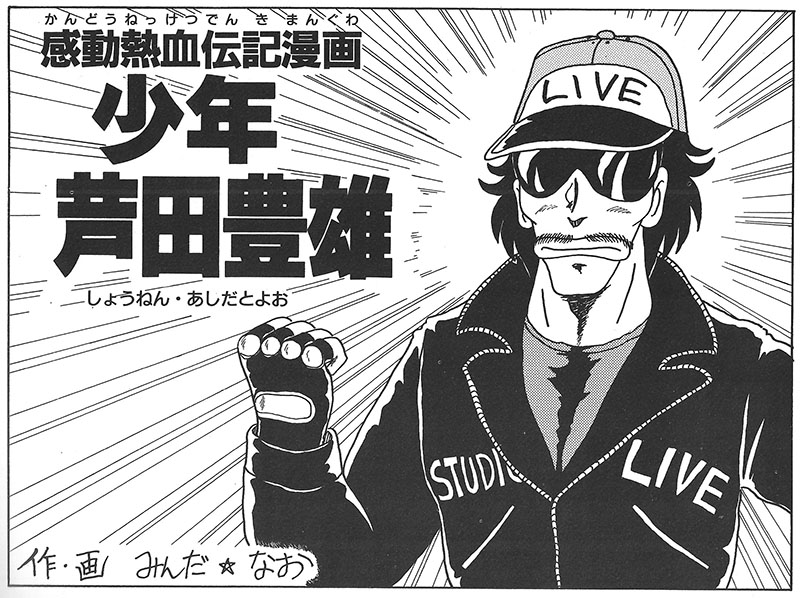
Manga self-portrait by Toyoo Ashida
Toyoo Ashida is like a swan?
Interviewer: Since Mr. Ashida is absent, I’d like to hear something about him that isn’t usually heard.
Matsushita: At the time of Vifam, he was also drawing mecha. That was the first time I saw his mecha. (Laughs) It was probably the first time since Daiapolon, wasn’t it?
Watanabe: I was also a mecha supervisor, but I was too afraid to make any changes to Mr. Ashida’s mecha. (Laughs)
Chikanaga: Mr. Ashida is always alone in his workroom. I don’t know what he’s doing. We talked about putting a wiretap mic on him. (Laughs)
Watanabe: We didn’t know him very well. Mr. Ashida is like a swan, flapping his feet under the water, but where you can see him, he’s graceful. (Laughs)
Kamishina: Only Watanabe knows him well.
Watanabe: No, I don’t either.
Kamishina: But you know each other relatively well, don’t you? You go out for work together, and…
Watanabe: Back then we had a lot of autograph meetings. We used to go around to various places, and the fans would ask us to draw this or that. Mr. Ashida and I tried our best to figure out how to draw faster and easier. (Laughs)
Interviewer: What did you come to in the end?
Chikanaga: We just drew the face. (Laughs)
Kamishina: If I drew the face, it would take a lot of time to get the balance. (Laughs)
Interviewer: So you got faster.
Watanabe: But Ashida-san is always fast. Not only in drawing, but in everything. He draws with both hands, holding a pencil in his left hand and an eraser in his right. Sometimes the eraser turns into a colored pencil. (Laughs) When I was working, he would quietly go into a room, do his work quickly, and then just leave. (Laughs) So we didn’t get to see him drawing.
Interviewer: Not only does he draw quickly, but he’s also ahead of the times, isn’t he?
Yamauchi: He was one of the first to adopt the [textural] lines that goes back and forth, which is very popular these days. He’s a progressive artist.
Interviewer: Vifam itself was at the forefront at that time, wasn’t it?
Yamauchi: Yes, it was. But I’m an old man now. It’s all too fast for me to keep up. (Laughs)
Kamishina: I can’t even see where we’re going. (Laughs)
Easy-to-draw chara and hard-to-draw chara
Watanabe: At that time, I was doing a lot of merchandising art (various jackets, covers, posters, etc.), and it was a lot of work. If it was a normal show, all I had to do was draw the main character and heroine. But in Vifam, there were always thirteen people together.
Interviewer: So it was thirteen times more work than usual?
Watanabe: Yes. (Laughs) However, I was happy to receive a letter from a teacher at my alma mater in the countryside saying, “My students are using the pencil boards with your drawings on them.” It made me happy. I was a little embarrassed because the picture was a bit naughty. (Laughs)
Yamauchi: I drew art for the Vifam children’s picture book.
Chikanaga: That picture book had a sonosheet with the theme song. The English lyrics were written phonetically in Japanese. (Laughs)
Watanabe: I learned to sing it after I saw that. (Laughs)
Interviewer: Do you have a favorite character, or a character that is difficult to draw?
Yamauchi: The Kukutonian interpreter (in Episode 28) has a funny way of speaking.
Matsushita: At the first preview, Mr. Yamauchi was laughing really hard. I was embarrassed because everyone was there.
Watanabe: Everyone’s shoulders were shaking as I watched from behind. Everyone was trying to hold back their laughter.
Yamauchi: I heard that the voice actors laughed so much during the recording that they couldn’t get their lines out. (Laughs)
Kamishina: I knew it!
Yamauchi: Also, I was impressed by how easy it was to draw Jimmy.
Kamishina: Because his eyes are covered.
Matsushita: Jimmy is easy to draw, but he doesn’t show much. (Laughs)
Kamishina: Kents was also easy to draw.
Yamauchi: Oh, that’s right.
Watanabe: I imagine you drawing only Kents.
Kamishina: In that respect, Kachua was difficult.
Matsushita: Oh, the balance of her forehead could only be an Ashida drawing.
Interviewer: Wasn’t there a time when Rodey’s character chart was changed during the broadcast?
Watanabe: As I was working on it, Ashida’s drawings kept changing. So we changed it in the middle of the show to match the design at that time.
Kamishina: But it didn’t take long for that to change as well. (Laughs)
Matsushita: If I drew it according to the character chart, Ashida-san would have to correct it. (Laughs)
Talking about favorite scenes
Interviewer: Lastly, can you tell us what scene you recommend in Vifam?
Watanabe: I think it’s Luchina’s underpants.
Chikanaga: Give it a rest. (Laughs) I think it’s the quality in the first episode.
Kamishina: That was an extravagant production for TV, wasn’t it?
Matsushita: It was about the same quality as today’s visuals.
Watanabe: I was thinking, “Don’t make me do this [hard] work.” (Laughs)
Kamishina: It was a lot of work to make, but it was interesting to watch, wasn’t it?
Watanabe: It’s really good for the viewers. (Laughs)
Yamauchi: Scott’s episode with the erotic books was also interesting.
Kamishina: Ashida-san was really into it.
Chikanaga: Ashida-san looked very happy.
Kamishina: The key animation was very lively. (Laughs) Somehow, the ladies’ skin was shiny. (Laughs) It’s rare to see Ashida’s work look like that in other projects.
Matsushita: Also, the scene of Rodey questioning Kachua (Episode 17) had a lot of energy.
Kamishina: The shadow on Rodey’s face is scary.
Watanabe: In the first episode, the rimlit shadows in the space scenes were very popular. I used it a lot in this work.
Kamishina: The pattern of the explosions was also innovative.
Watanabe: I was forced to draw that.
Matsushita: In the one where Meuller kidnaps Kachua (Episode 41), I think Ashida-san did the key animation.
Interviewer: In Vifam, most of the popular episodes were done by you guys, right?
Watanabe: I like to take all the good parts myself. (Laughs)
Kamishina: If you put it that way, it’s a bit of a stretch. (Laughs)
Watanabe: However, I was approached by people who liked my work after watching Vifam. After that, the scope of my work expanded.
Yamauchi: Even now, there are very few shows that have so many interpersonal relationships. In that sense, it was a challenging work.
Watanabe: When I was working on Vifam, it was very painful. I wanted it to end as soon as possible, but I was sad when it was over. I’d like to do something like that again.
Interviewer: I agree. Thank you very much for your time today.

